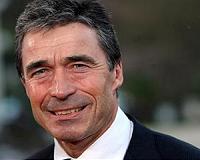 |
Washington (UPI) Jan 25, 2011 While the war on terror trundles on in fits and starts, the arrival of body scanners at an airport near you is generating more skepticism than the security industry anticipated and that may affect overall forecasts of global growth in the deployment of the privacy-stripping machines, new research showed. Academics and travel industry analysts as far apart as North America, Asia and Australia say the multibillion-dollar global spending on airport body scanners can only be justified if it helps stop terrorist attempts to a reasonable level. If it doesn't, imply the reports, the only beneficiaries of the massive redeployment -- growing globally by the day -- will be the security industries involved in supplying the machines, the training and after-sales services. In other words, the more misfortune strikes the innocent, the more likelihood there is of pro-scanner lobbies winning the argument that the body scanners should stay indefinitely, have frequent upgrades and remain a key item on security agenda. A rash of terrorist incidents in 2009 and 2010 led to a flurry of commercial research activity as security industry providers scrambled to provide the body scanner of choice to airports across the world. Competing claims and marketing strategies ensure that no single industry standard for body scanning is likely to be adopted globally. Instead, several different kinds of machines, not necessarily compatible with each other, are likely to take up strategic space at airports as government security authorities and politicians fret over ways to eliminate risks of terrorist attacks. Most of the models being marketed have been trashed by advocates of citizens' privacy. The Travel Impact Newswire said the machines had earned notoriety as "porno-scanners" because they leave nothing to the imagination. Supporters say the scanners are necessary to enhance aviation security in the wake of the foiled 2009 Christmas Day attempt by a suspected terrorist to allegedly hide liquid explosives in his underwear to blow up Northwest Airlines Flight 253. The rollout of 400 of the scanners at about 70 of the 450 US airports just before the year-end holiday travel season ran up against controversy over issues related to invasion of privacy. Confronted with the choice of going through a scanner or being subjected to an invasive patdown, air travelers demanded full-disclosure of another kind: who is seeing the images, where they are being stored and, perhaps most important, are they worth the financial and intangible costs in relation to the security they supposedly provide, the Travel Impact Newswire said. Questions were also raised about the financial benefit to the shareholders and investors of manufacturers and suppliers. Most of the questions remain unanswered, but more of the scanners are being deployed worldwide. An opinion survey by Crowd Science said some of the negative sentiments against the installation of the scanners had "softened." A study by two professors at the University of Newcastle, Australia, and the University of Ohio, calculated the cost of the body-scanners at $1.2 billion per year by 2014 in the United States alone. It said the "absence of a cost-benefit analysis for (advanced imaging technology) is the motivation for the present study." The analysis found that "based on mean results, more than one attack every two years would need to originate from U.S. airports for AIT to pass a cost-benefit analysis. "In other words, to be cost-effective, AITs every two years would have to disrupt more than one attack effort with body-borne explosives that otherwise would have been successful despite other security measures, terrorist incompetence and amateurishness, and the technical difficulties in setting off a bomb sufficiently destructive to down an airliner," the report said. The study noted that even after the rollout of a projected 1,800 units at $430,000 a piece, 500 airport checkpoints would still be without AIT, meaning that the final costs would be much higher. The study said, "While the U.S. requires a cost-benefit analysis for government regulations (Office of Management and Budget 1992), this does not appear to have happened for most homeland security expenditures. "On the other hand, cost-benefit and other risk acceptance studies are routinely conducted by the Nuclear Regulatory Commission, the Environmental Protection Agency, the Federal Aviation Administration and other agencies even on politically charged issues. These studies are particularly useful for low probability-high consequence events where public safety is a key criterion for decision-making." The authors of the study added, "The need for risk and cost-benefit assessment for homeland security programs, and those supported by the Department of Homeland Security in particular, is well made by many in government, industry and academe." The study also noted the complexity of the task involved, calling the assessment of such risks as a multidimensional decision problem with many possible interactions between security measures, threat scenarios, threat probabilities, risk reduction and losses.
Share This Article With Planet Earth
Related Links The Long War - Doctrine and Application
 NATO boss offers 'solidarity' to Russia after terror attack
NATO boss offers 'solidarity' to Russia after terror attackBrussels (AFP) Jan 24, 2011 NATO chief Anders Fogh Rasmussen offered the western alliance's "solidarity" to Russia on Monday after a suspected suicide bombing killed at least 31 people at Moscow's busiest airport. "We are in this fight together," the defence organisation's secretary general said in a statement, after the blast in the packed arrivals hall of Domodedovo international airport. "This is why in the NATO ... read more |
|
| The content herein, unless otherwise known to be public domain, are Copyright 1995-2010 - SpaceDaily. AFP and UPI Wire Stories are copyright Agence France-Presse and United Press International. ESA Portal Reports are copyright European Space Agency. All NASA sourced material is public domain. Additional copyrights may apply in whole or part to other bona fide parties. Advertising does not imply endorsement,agreement or approval of any opinions, statements or information provided by SpaceDaily on any Web page published or hosted by SpaceDaily. Privacy Statement |